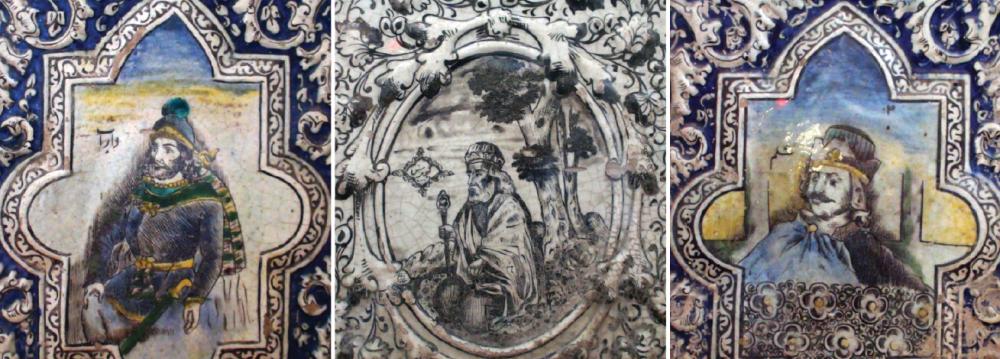The 1,200-page book ‘Qajar Tile Work,’ on the art of tile designing during the Qajar era (1785-1925) will be reviewed and discussed at a meeting on May 21.
Written and edited by veteran art historian, author and lecturer Mohammad Reza Riazi, the meeting will be held from 2-4 pm at Tehran’s Advanced Research Institute of Art (ARIA) affiliated to the Iranian Academy of Arts, ISNA reported.
The voluminous work was published in 2016 by the Tehran-based publishing house Yassavoli. ARIA is located at No. 29, Sokhanvar Alley, Valiasr Avenue, north of Imam Khomeini Street.
Riazi will be present at the meeting and speak about his work. Also participating is painter, art researcher, essayist and lecturer Elaheh Panjebashi. The meeting is open to the public.
Research Work
‘Qajar Tile Work’ (in Persian: ‘Kashi Kari-e Qajar’i) is a work of research on the tile designs in buildings from the Qajar era. Illustrated with color pictures, the book has five chapters.
The first chapter deals with the history of tile production from the onset of the era till its end. The chapter also explains the characteristics of tiles and glazed bricks in the different eras of the Seljuks (1016-1307), the Ilkhans (1256-1353), the Timurids (1370-1507), the Safavids (1502-1736), the Zands (1751-1794), the Afshars (1736-1796) and the Qajars.
Second sheds light on the community, art and industry of tile work during the time. It includes a typology of the tiles and categorizes their designs, colors and dimensions. Explanations about tile producing workshops and the methods in repairing tiles are included in the chapter.
In the third chapter factors that influenced tile designs, such as photographs and illustrated manuscripts, murals, lithographs and travelogues, are explored.
A pictorial narrative in the fourth chapter elaborates on tile works in mosques, cemeteries, schools, bathhouses and palaces, built in the historical cities of Tehran, Semnan, Damghan, Qazvin, Isfahan, Shiraz, Kerman, Yazd, Dezful and Kashan during the Qajar rule. The tile collections preserved at the National Museum of Iran, as well as other Qajar tiles kept at European museums, are also included in the chapter.
Outstanding tile masters of the past are listed in the fifth chapter along with their works.


